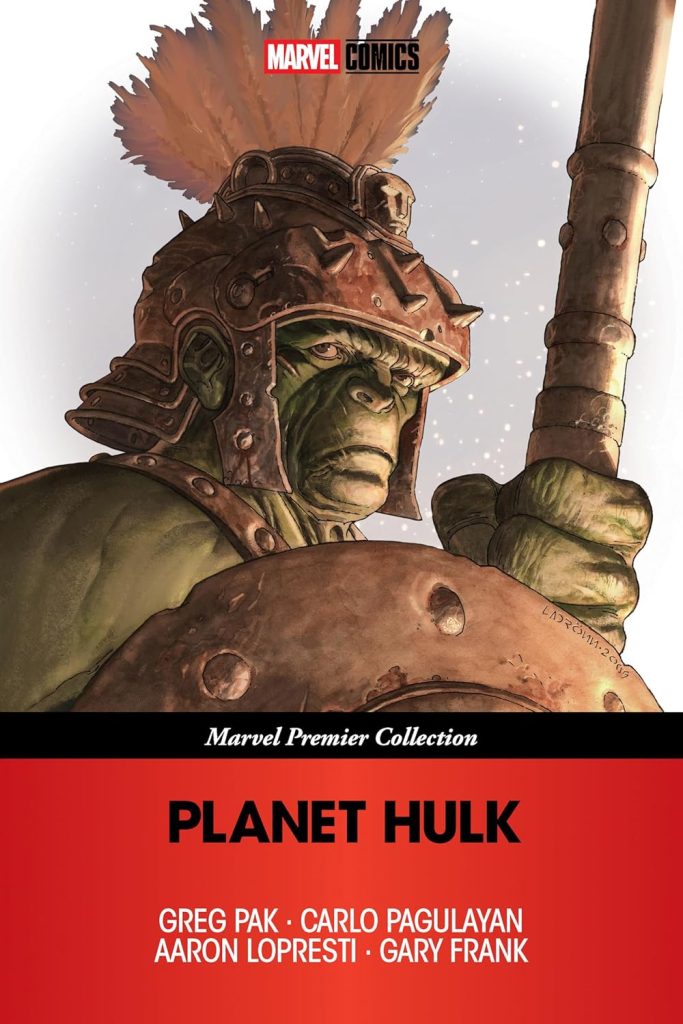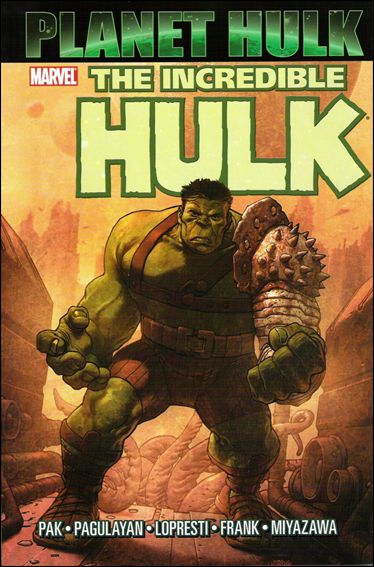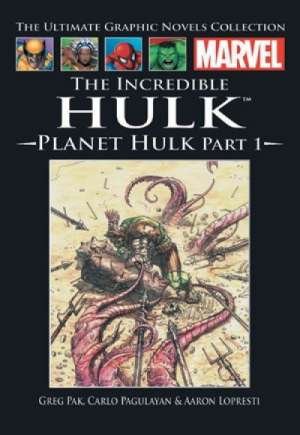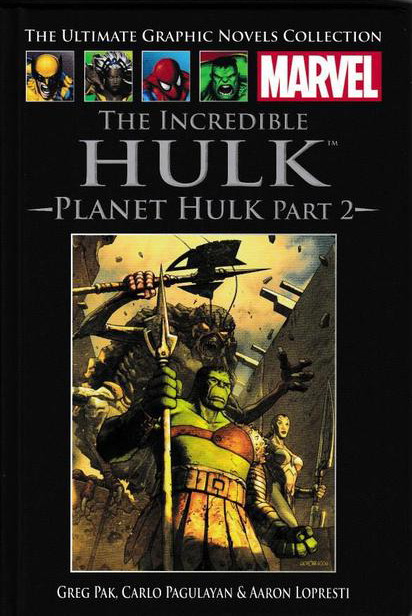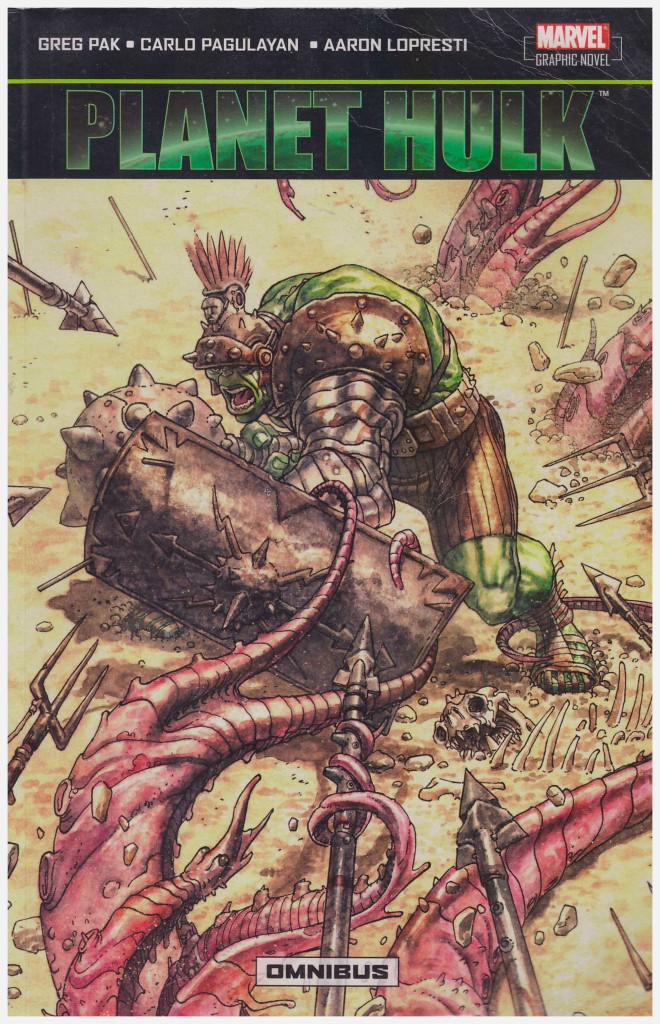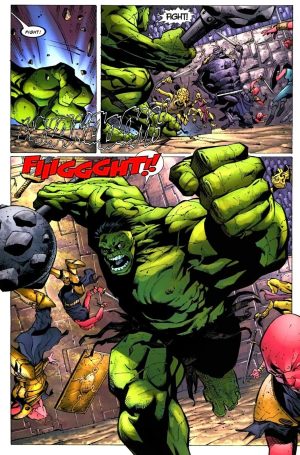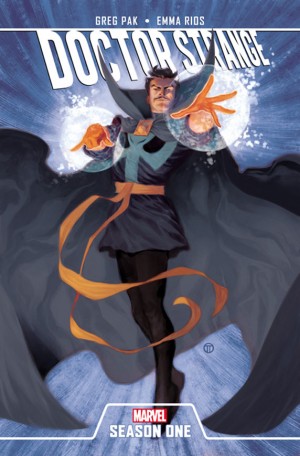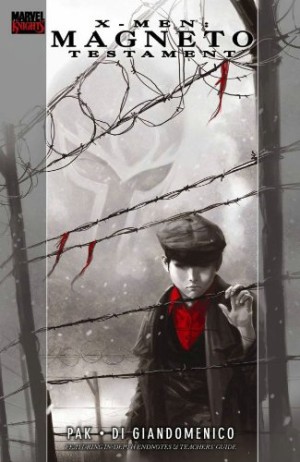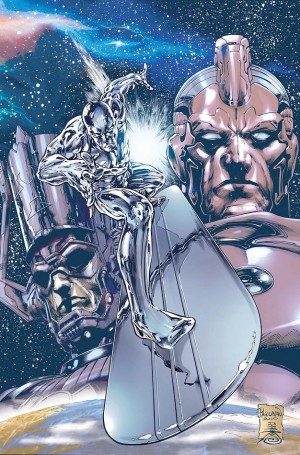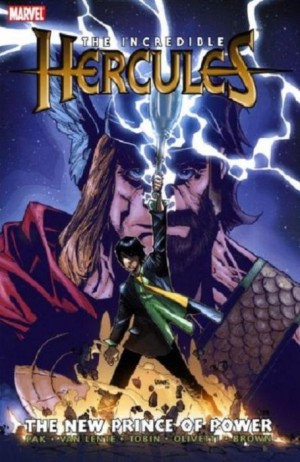Review by Karl Verhoven
The background to Planet Hulk is that Earth‘s smarter superheroes have collectively decided the Hulk’s perpetual rampages are too great a threat, so he’s been sent into space aboard a craft programmed to land on an unpopulated planet. Instead it arrives on Sakaar, where technology exists to subdue the Hulk and implant him with a device that will kill him if he doesn’t obey.
From there Greg Pak imaginatively throws him into a gladiatorial arena where he’s to kill or be killed. Seven beings survive to form the core cast for the remainder of the book, eventually uniting themselves with the equivalent of a blood oath as Warbound.
Very few of the writers dealing with the Hulk’s essentially mindless character over the years have produced a sustained run of even above average material by today’s standards. Peter David managed, but by tweaking the series formula, providing the Hulk with greater intelligence. Pak deserves some credit, then, for creating an environment in which the dimmer, although not mindless, Hulk can flourish.
He thrives on the aggression of televised gladiatorial combat, where he’s known as Green Scar after an injury delivered by the emperor in his first contest. Having introduced gladiators, Pak opens the door to further similarities with the ancient Roman empire via Sakaar’s rulers, and works in a whole packet of familiar material then given a science-fiction twist (Spartacus, Caligula and more). This is a solidly linear story with few plot twists along the way, but the alien environment and societies provide the distractions.
This is “Hulk Smash!” on a previously unseen scale, and it’s a gift for primary artists Carlo Pagulayan and Aaron Lopresti. Lopresti’s style is slightly more decorative, but Pagulayan supplies a greater grit and sense of placement by moving the viewpoints beyond the immediate cast. Guest artists illustrate brief sequences providing the backgrounds of the Hulk’s new colleagues, interspersed throughout the book. The most surprising of them is Alex Niño‘s two pages detailing the end of the Brood homeworld.
Pak creates a monstrously callous emperor: “What do you want from me? Tears? For these slaves? For these monsters? Yes. I killed them. As is my right. As it my duty. As is my pleasure.” He’s a cowardly background manipulator throughout, never taking a direct hand unless certain the odds are substantially in his favour, displaying only loyalty to himself.
This is a real value for money package, embracing fourteen chapters and the incredibly detailed ‘Gladiator Guidebook’, just under fifty pages of typeset text and accompanying illustration. It provides all the background information about Sakaar, the assorted alien species and the gladiatorial games.
There are differences between the US and UK editions of Planet Hulk, with the US book slightly larger and incorporating sections drawn by Pete Woods, Takeshi Miyazawa and Gary Frank. They earn cover credits with eight pages each, while suggesting parity with the 150 plus delivered by Pagulayan and Lopresti. The best of this material is Amadeus Cho from Pak’s Hercules series calculating that the Hulk’s rocket didn’t land where planned and informing Reed Richards. It leads nicely into World War Hulk.
For those interested, Planet Hulk has also been adapted as an animated movie, generally well received, but featuring some significant changes to the graphic novel plot. In the UK it was also spread over two editions of the handsomely produced hardback partwork The Ultimate Graphic Novels Collection, and the most recent reissue is as part of the Marvel Premier Collection.
